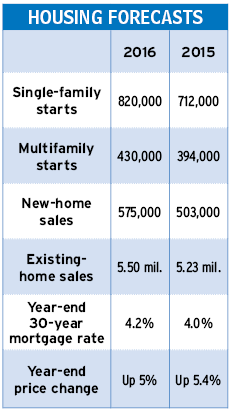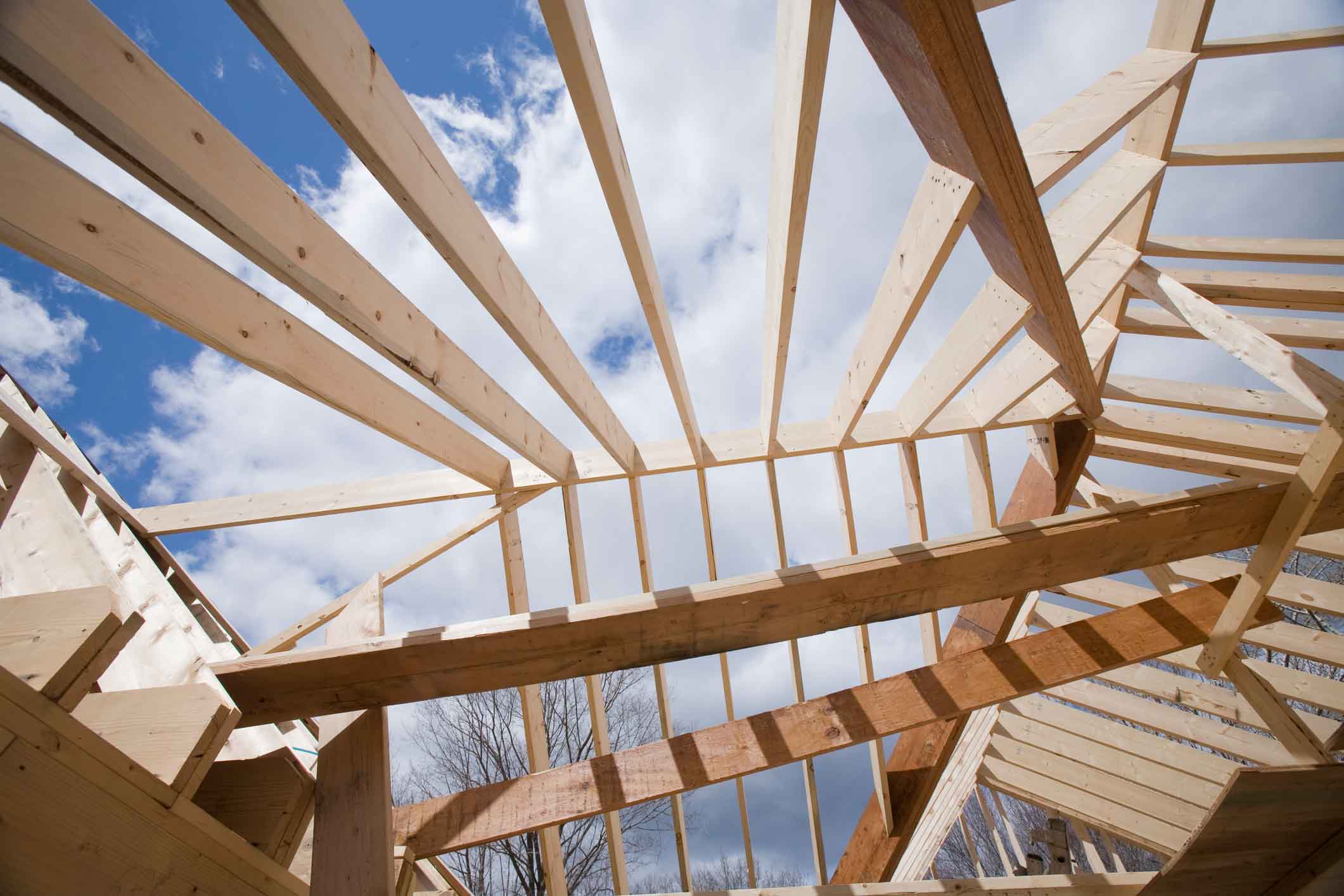2016: A Second Good Year for Housing
The housing market picked up last year in many areas of the U.S. Look for it to grow as well or better this year.
The housing market is poised for a solid year. In fact, it’s shaping up to be slightly better than 2015, when many parts of the U.S. saw housing perk up.

More potential buyers are seeking mortgages this year as they see their paychecks swell a bit in a strengthening job market that’s forcing up wages. Stronger household formation and continuing low mortgage rates will also spur buyers. Growth in households, moreover, is fueling a clamor for apartments in metro areas, and vacancy rates have fallen to 22-year lows.
Builders will scramble to keep up with demand for housing of all types. Inventories of new homes are especially tight. Construction is constrained by, among other things, a big shortage of skilled home construction workers. The need for new homes will increase as sales of existing homes rise — homes sold by downsizing baby boomers as well as by buyers looking to move up. But some builders will continue to focus on putting up multifamily homes — the quickest way to expand inventory and make more efficient use of workers.

Sign up for Kiplinger’s Free E-Newsletters
Profit and prosper with the best of expert advice on investing, taxes, retirement, personal finance and more - straight to your e-mail.
Profit and prosper with the best of expert advice - straight to your e-mail.
Housing markets overall will be strongest in the West and in the South, where they are boosted by strong population growth stemming in part from strong in-migration from the Northeast and Midwest. Note that home prices are rising at near-double-digit rates in San Francisco, Denver, Portland, Ore., Seattle and Dallas. Price growth is strong in smaller metros as well — places such as Salt Lake City, Boise, Idaho, Reno, Nevada and much of the Florida peninsula. Phoenix and Las Vegas have improved greatly since their “bust” days, though they still retain some of the highest shares of underwater mortgages in the country.
More-modest growth will pace much of the Northeast and the Midwest. Boston is a bright spot in the Northeast, while Minneapolis, Columbus, Ohio, Des Moines, Iowa, and Indianapolis will be among the top gainers in the Midwest. The Detroit area is also showing improvement.
But states and cities that largely rely on strong oil prices will lag the field. Houston’s market is softening, and home prices are falling in Oklahoma City and Tulsa, Okla., Baton Rouge, La., and near fracking hot spots in North Dakota, Wyoming, Ohio and Pennsylvania.
Get Kiplinger Today newsletter — free
Profit and prosper with the best of Kiplinger's advice on investing, taxes, retirement, personal finance and much more. Delivered daily. Enter your email in the box and click Sign Me Up.

David is both staff economist and reporter for The Kiplinger Letter, overseeing Kiplinger forecasts for the U.S. and world economies. Previously, he was senior principal economist in the Center for Forecasting and Modeling at IHS/GlobalInsight, and an economist in the Chief Economist's Office of the U.S. Department of Commerce. David has co-written weekly reports on economic conditions since 1992, and has forecasted GDP and its components since 1995, beating the Blue Chip Indicators forecasts two-thirds of the time. David is a Certified Business Economist as recognized by the National Association for Business Economics. He has two master's degrees and is ABD in economics from the University of North Carolina at Chapel Hill.
-
 Americans Are Retiring Later: Will This Trend Last?
Americans Are Retiring Later: Will This Trend Last?Given a host of pressures to keep working, Americans are retiring later in life. Will regulatory and economic forces encourage you to work longer?
By Christy Bieber
-
 Trump’s Tax Cut Risks Your SNAP, Medicaid Benefits
Trump’s Tax Cut Risks Your SNAP, Medicaid BenefitsTax Cuts The GOP budget blueprint could slash lifesaving programs for millions of U.S. households.
By Gabriella Cruz-Martínez
-
 Federal Debt: A Heavy Load
Federal Debt: A Heavy LoadEconomic Forecasts The debt continues to grow, but record-low interest rates could ease the long-term damage.
By David Payne
-
 How the Fed's Moves Affect You
How the Fed's Moves Affect YouEconomic Forecasts It’s pumping trillions of dollars into the economy and keeping rates near zero. Savers are sunk, but borrowers get a boost.
By David Payne
-
 U.S. Manufacturing Is Already Ailing from Coronavirus
U.S. Manufacturing Is Already Ailing from CoronavirusEconomic Forecasts Supplies are hard to come by, and in the longer-term demand may be at risk.
By David Payne
-
 Consumers Will Feel Impact of Rapidly Falling Interest Rates
Consumers Will Feel Impact of Rapidly Falling Interest RatesEconomic Forecasts Mortgage and car loans will experience the most significant dips, while some holders of Treasuries may get a slight boost.
By David Payne
-
 Will You Have to Pay More Sales Taxes on Your Online Purchases?
Will You Have to Pay More Sales Taxes on Your Online Purchases?business One thing’s for sure: Consumers who live in one of the five states without a sales tax won’t be affected by the Supreme Court’s ruling.
By David Payne
-
 What to Expect From the New Fed Chief
What to Expect From the New Fed ChiefEconomic Forecasts By and large, Jerome Powell will move along the path set by his predecessor.
By Lisa Gerstner
-
 How a Border Tax Would Affect You
How a Border Tax Would Affect YouBusiness Costs & Regulation A plan to limit imports could raise prices but also create more jobs.
By Sandra Block
-
 A Housing Shortage Looms: Builders Can’t Keep Up
A Housing Shortage Looms: Builders Can’t Keep Upbusiness Starter homes especially are becoming scarce.
By David Payne
